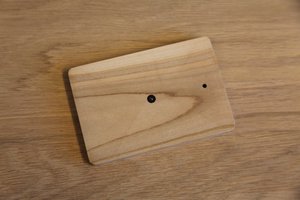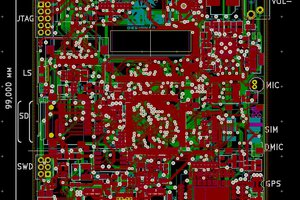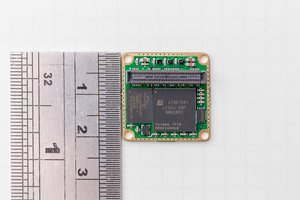[Beginner’s Guide] Introduction to AiPi-Eyes-S1
Preface:
This tutorial is designed for beginners to quickly get started with the AiPi-Eyes-S1 and achieve some simple application development. It is for reference and learning purposes only. The complete list of the AiPi-S1 development board is as follows:
Component | Quantity |
AiPi-Eyes-S1 | 1 |
3.5-inch Touch Screen | 1 |
DVP Camera | 1 |
Microphone | 2 |
Speaker | 2 |
All materials used in this tutorial can be found in the following URL, including schematics, chip manuals, and required software. The complete collection of materials for AiPi-Eyes-S1 is available at:
https://docs.ai-thinker.com/en/eyes
Ⅰ. Overview
The AiPi-Eyes-S1 is a development board designed by the Ai-Thinker open-source team specifically for the Ai-M61-32S, supporting WiFi6 and BLE5.3. The Ai-M61-32S module it carries has a rich set of peripheral interfaces, including DVP, MJPEG, Display, AudioCodec, USB2.0, SDU, Ethernet (EMAC), SD/MMC (SDH), SPI, UART, I2C, I2S, PWM, GPDAC, GPADC, ACOMP, and GPIO, etc.
The AiPi-Eyes-S1 integrates an SPI screen interface, a DVP camera interface, an external ES8388 audio codec chip, and a reserved TF card slot. It also features a USB interface that can accommodate a USB camera.
Ⅱ. Introduction to the Main Control Chip BL618
The BL616/BL618 series chips are equipped with a RISC-V 32-bit CPU, featuring 16KB D-cache and 32KB I-Cache, with a CPU frequency of up to 320MHz. They are suitable for high-performance application areas such as the Internet of Things, embedded systems, and artificial intelligence.
Ⅲ. Introduction to the Peripheral Interfaces of AiPi-Eyes-S1
- 1. SPI Screen Interface
- 2. SPI Interface
- 3. DVP Camera Interface
- 4. USB Interface
- 5. I2C Interface
- 6. Speaker Interface
- 7. Microphone Interface
- 8. Pin Header
The SPI screen interface is connected with a 30PIN FPC connector. The factory procedure has been adapted to the GC93070N color screen. The screen display IC model is st7796, and the touch IC model is CHSC6540.
A 7-pin SPI interface is provided.
An integrated DVP 24Pin camera interface is available, compatible with cameras like GC0308, GC0328, supporting up to 200W resolution.
The board includes a USB-Type-C interface for connecting external USB cameras.
A four-pin USB interface is also available.
A four-pin I2C interface is provided.
Ⅳ. Expandable Peripherals for AiPi-Eyes-S1
A TF card expansion slot is reserved on the back of the S1, which requires manual soldering of the corresponding interface.
Ⅴ.Precautions
1. Use of DVP Camera with TF Card Expansion
When the TF card is expanded, the DVP camera can only be used. The TF card slot shares resources with the SPI screen and ES8388 audio chip. When a TF card is connected, it is equivalent to using the AiPi-Cam.
- Feedback Issues with Speakers and Microphones
- I2C Pin Sharing
- SPI Interface and DVP Camera Incompatibility
The proximity of speakers and microphones can cause interference. This is due to the speaker's sound being picked up by the microphone and fed back, creating a self-oscillating loop. To resolve this, increase the distance between the speaker and microphone, or reduce the microphone's sensitivity.
The audio ES8388, DVP camera, and SPI screen's touch IC all use the same I2C pins. This applies to GPIO_0 and GPIO_1.
When using the SPI interface on J7, some pins conflict with those of the DVP camera, and they cannot be used simultaneously.
Ⅵ. Contact Us
Official Website: http://en.ai-thinker.com/
Development DOCS: https://docs.ai-thinker.com/en/welcome
Sales Support: overseas@aithinker.com
Technical Support: support@aithinker.com
LinkedIn:https://www.linkedin.com/company/ai-thinker ...
Read more » Ai-Thinker
Ai-Thinker
 Arnov Sharma
Arnov Sharma
 Karri Palovuori
Karri Palovuori
 HT3H5796-14
HT3H5796-14
 greg davill
greg davill